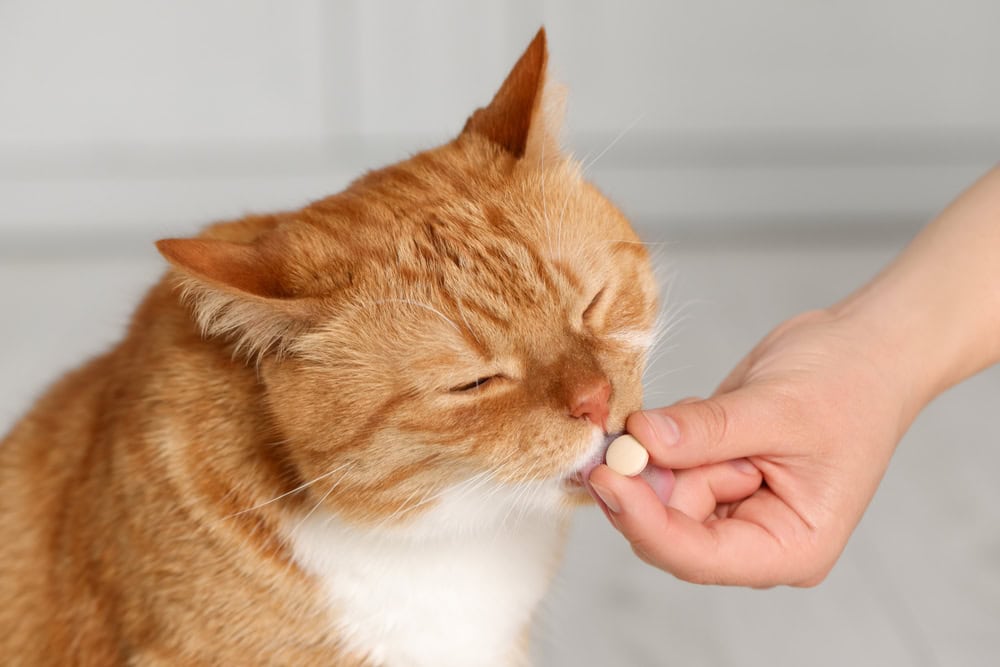Is giving your pet their medication akin to a pro wrestling match? Do they spit pills out as soon as you turn away? Medication resistance in pets is a common problem, but with the right approach, you can overcome that obstacle and successfully give your pet their medicine. Our Aberdeen Veterinary Clinic team offers some pro tips to help you medicate your pet without all the fuss.
Understand your pet’s medication
Before giving your furry pal a new medication, ensure you understand our team’s instructions. We will explain the drug’s purpose, correct dosage and frequency, and form (e.g., liquid, capsule, etc.), so you will be better equipped to administer it to your pet.
If your furry friend is pill-resistant or refuses liquid medication, our team can work with you to devise a solution. For example, sometimes we can replace pill-form medications with liquids.
Use the right tools to dispense pet medication
Along with understanding your pet’s medication, there are some tools you can rely on to make the task easier, such as:
- Pill pockets or treats — These are specially designed treats that can hide pills, making it easier for your pet to consume the medication without noticing.
- Pill dispensers — Devices such as pill guns or “pillers” can help ensure your pet takes their pill while reducing the chances they will spit it out or you will suffer a bite or injury in the process.
- Syringes — For liquid medications, using a medication syringe, which typically comes with the medication, can help you measure and administer the correct dose.
Make medication time enjoyable for your pet
Many pets struggle with taking medication because they associate it with something new that causes anxiety. Create a positive environment for your furry pal by using the following tips:
- Stay calm — Your pet can sense your worry and anxiety. Staying calm can help reduce their stress.
- Stick to a routine — Most medications should be given at certain times of day. Pets thrive on routine, and by maintaining their medication schedule, you can also minimize their resistance as they learn to adapt.
- Reward system — Reward your four-legged friend with a treat or praise immediately after administering the medication to create a positive association.
Pro tips for administering pet medication
Now that you have your tools, a calm approach, and rewards for your pet, it’s time to give them their medication.
Techniques for administering pills:
- Manual method — Gently hold your pet’s head, tilt it back, and open their mouth. Place the pill at the back of their throat (but not in their throat) and close their mouth, gently stroking their throat to encourage swallowing.
- Hide in food — As long as the medication can be taken with food, hide the pill in a small amount of your pet’s favorite food (e.g., peanut butter, cheese, pill pocket). Check to see that they’ve eaten the entire portion so they get the total dose.
Techniques for administering liquid medication:
- Syringe method — Fill the syringe with the prescribed dose. Gently insert the syringe into the side of your pet’s mouth, between the cheek and teeth, and slowly release the liquid.
- Mix with food — If the medication can be mixed, ensure your pet consumes the entire meal to receive the total dose.
Techniques for applying topical medications:
- Preparation — Trim any excess fur around the affected area if needed, and clean the skin before applying the medication.
- Prevent licking — If necessary, use an Elizabethan collar to prevent your furry friend from licking off the medication.
Monitor your pet for medication side effects

Most medications are safe with minimal side effects, but it’s important to note any changes in your pet’s behavior or health when starting a new drug. Watch for adverse reactions or side effects, and contact our veterinarian if you notice anything unusual.
Possible side effects or allergic reactions may include:
- Lumps or bumps
- Rashes
- Swelling
- Vomiting or diarrhea
- Itchiness
- Weakness or lethargy
- Difficulty breathing
- Seizures
Contact our team immediately if you observe any adverse reactions in your pet. Very rarely, some pets may experience anaphylactic shock if they are allergic to certain ingredients in medications, which can be a life-threatening condition and require emergency treatment.
By following our tips, you can give your pet their medication with minimal stress for both of you. If you are struggling to give your pet their meds, contact our Aberdeen Veterinary Clinic team so we can provide guidance and come up with a solution.

